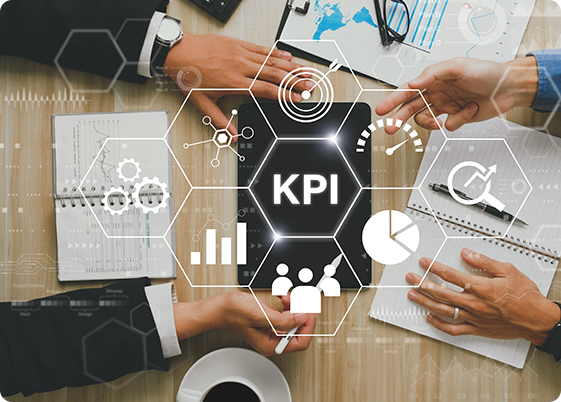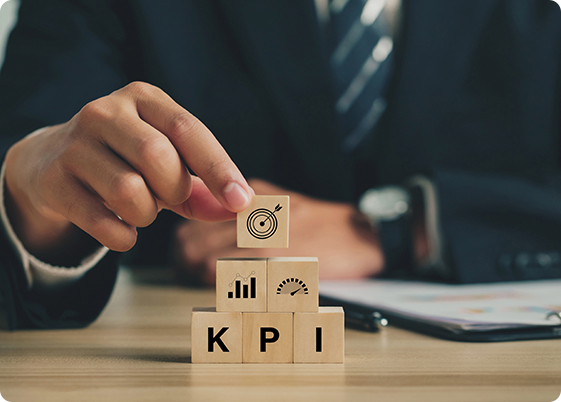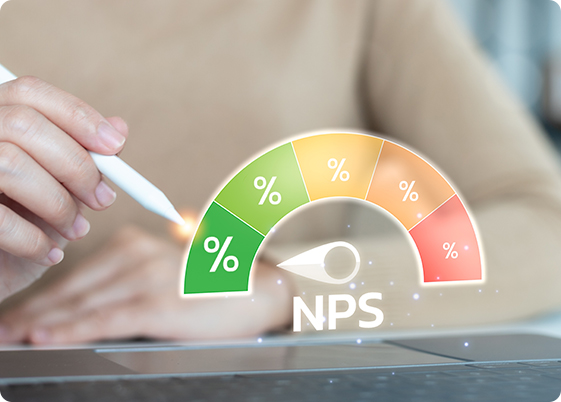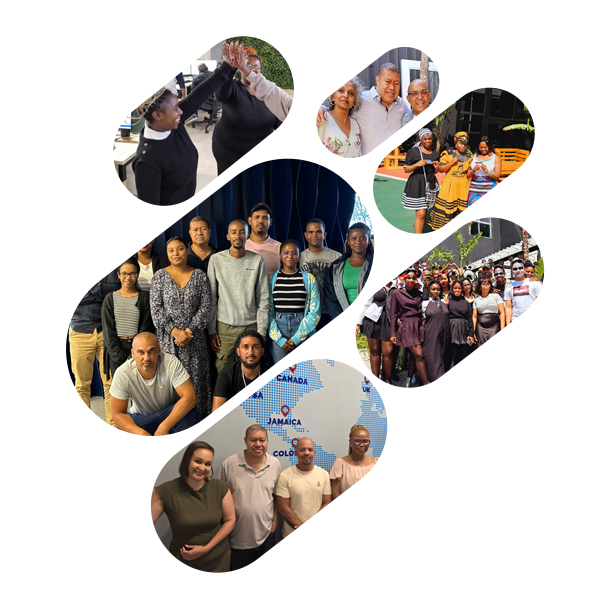
Customer success or failure depends on their metrics. To improve customer experience, employee performance, and operational efficiency, define clear customer service KPIsthat are measurable and actionable. For global contact centres, including fast-growing hubs in South Africa, these KPIs help ensure efficiency and customer satisfaction.
This guide explains key KPIs, their importance, what every team should track, and how to utilize KPI data to enhance performance.

What are Customer Service KPIs
Customer service KPIs are quantifiable measures that indicate how effectively a support team is achieving key business objectives, such as speed, quality, cost, and customer satisfaction. They break down vague goals such as "improve service" into tangible numbers that can be tracked over time. When leaders seek answers to the question "What are KPIs in customer service?", they use KPIs to spot trends and prioritise resources.
Why Are Customer Service KPIs Important
Understanding the importance of customer service KPIs is simple: they convert customer interactions into priorities. KPIs help you identify bottlenecks, validate training needs, justify technology investments, and align teams around the outcomes that matter most to customers and the business.
KPIs support benchmarking against peers and guide strategic choices. For instance, if "what are the key performance indicators for customer service" is asked by leadership, you can refer to an even-balanced set of metrics that represent both efficiency (cost, speed) and effectiveness (satisfaction, retention).
Key Customer Service KPIs You Should Track
Here are the key KPIs that all support operations should monitor, along with the frequency of measurement (real-time, daily, weekly, or monthly). These are phrased so you can simply paste them into your reporting dashboards.

Customer Satisfaction (CSAT) Score
Customer satisfaction KPI (CSAT) calculates customers' satisfaction with a particular interaction. Usually collected via brief post-contact surveys, CSAT is actionable and perfect for measuring agent-level performance.
(CSAT = % satisfied respondents; typically measured on a 1–5 or 1–10 scale).
Net Promoter Score (NPS)
The NPS measures how likely customers are to recommend your business. It complements CSAT by showing long-term (ongoing, with typical frequencies of quarterly or biannual) loyalty trends.
First Response Time (FRT)
First Response Time indicates the speed with which customers are first responded to. In omnichannel settings, rapid FRT alleviates customer annoyance and enhances perceived service quality. (Measure median or 90th percentile for realism; use channel-specific baselines).
Resolution Time (RT)
Resolution Time measures the time it takes to resolve an issue altogether. Minimising RT typically enhances CSAT and cost measures. (Also called Average Time to Resolution or Time to Resolve; consider median to avoid skew.)

Customer Effort Score (CES)
CES measures the ease of the customer's experience. Lower effort correlates with higher loyalty; CES is valid for testing process changes and self-service options.
Abandonment Rate
The Abandonment rate is a measure of the percentage of customers who hang up or leave the chats before an agent is assigned. If the abandonment rates are high, then they indicate understaffing, poor IVR design, or long wait times. It is supposed to be measured by channel.
Abandonment rate = % of customers who hang up or leave chat before reaching an agent. High rates often indicate understaffing, poor IVR flow, or lengthy wait times.
Service Level Agreement (SLA) Compliance
SLA Compliance gauges if the interactions are aligning with pre-negotiated response and resolution levels. This metric is crucial for BPOs and vendor-managed services, where penalties and customer satisfaction depend on SLA performance.
SLA compliance = % of interactions meeting agreed response/resolution targets
Critical for BPOs and vendor-managed services where penalties or renewals depend on performance.
Customer Retention Rate
Customer retention rate links service performance to revenue measure cohort retention over time to assess impact. It assists in measuring the long-term value of support improvements.
Examples & Templates of KPI’s:
To keep things simple, below are a few call center kpi examples that you can easily implement:
- Daily FRT by queue (target: < 15 minutes)
- Weekly CSAT by agent (target: 85%+)
- Monthly RT for escalations (target: < 48 hours)
- Abandonment Rate per hour (target: < 5%)
These customer service kpi examples facilitate easy setting of achievable targets and designing useful dashboards.
How to Use Customer Service KPI Metrics Effectively
Collecting KPIs is only half the job, converting KPIs into action is where value appears. Follow these steps to leverage customer service kpi metrics:
- Define a balanced KPI set:Mix operational KPIs (FRT, RT, SLA) with experience KPIs (CSAT, NPS, CES) to avoid optimising one area at the expense of another.
- Segment the data: Analyse KPIs by product, region, and channel to uncover contact centre KPIs variations and local root causes.
- Correlate metrics:Link CSAT with RT or FRT to find the drivers behind satisfaction dips.
- Run focused experiments: Make one change (script, routing, training) and measure its effect on specific KPIs.
- Close the feedback loopShare KPI insights with agents and product teams so issues are fixed at the source.
If your team is unsure what are kpi's for customer service in practice are, start with CSAT, FRT, and RT—then add more sophisticated measures as reporting maturity improves.
Practical Tips for KPI Governance
- Use reliable data sources; inconsistent definitions will kill credibility.
- Standardise KPI definitions across regions (e.g., how you calculate RT).
- Review KPIs regularly—daily for operational dashboards, monthly for strategic reviews.
- Prioritise improvements that will move multiple KPIs (for example, better knowledge articles reduce RT and raise CSAT).
Where KPIs Meet Careers
Tracking and improving KPIs also shape the workforce. Teams that manage KPIs well open up career paths in analytics, quality coaching, and workforce optimisation. Whether you’re applying locally or exploring customer service representative jobs in South Africa, KPI knowledge is now a core skill employers value.”
Conclusion
Customer service KPIs are the compass that guides support teams toward better customer experiences and smarter operations. Whether you’re asking “what are KPIs in customer service” or building a reporting stack from scratch, focus on a balanced set of metrics, ensure data quality, and translate insights into targeted actions. Done well, KPI-driven improvements reduce cost, increase satisfaction, and strengthen customer loyalty, results every business needs.
Companies like HGS South Africa actively use KPI-driven insights to improve customer experience, streamline operations, and create rewarding career paths. For job seekers, joining such organisations means gaining exposure to world-class customer service practices.
FAQs
How do I choose the right KPIs for my business?
Pick KPIs that tie directly to your strategic goals, speed, quality, cost, or retention and start small. Use baseline data to set realistic targets.
How can technology help in tracking Customer Service KPIs?
Modern platforms automate data collection, display real-time dashboards, and enable correlation across channels, making KPI analytics scalable.
How do KPIs help in improving the customer service process?
KPIs reveal patterns and root causes that guide training, process redesign, and technology investments.
What’s the difference between qualitative and quantitative KPIs in customer service?
Quantitative KPIs are numeric (FRT, RT, CSAT), while qualitative indicators include verbatim feedback and sentiment analysis; both are necessary for a complete picture.
 SA
SA Canada
Canada Colombia
Colombia India
India Jamaica
Jamaica Philippines
Philippines UK
UK US
US



